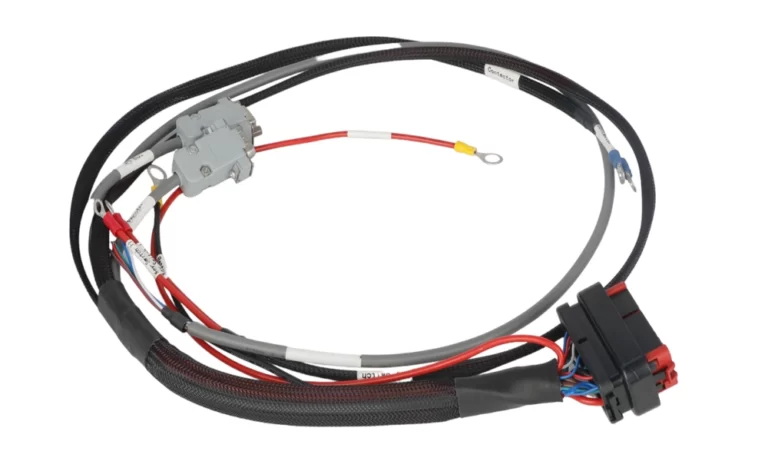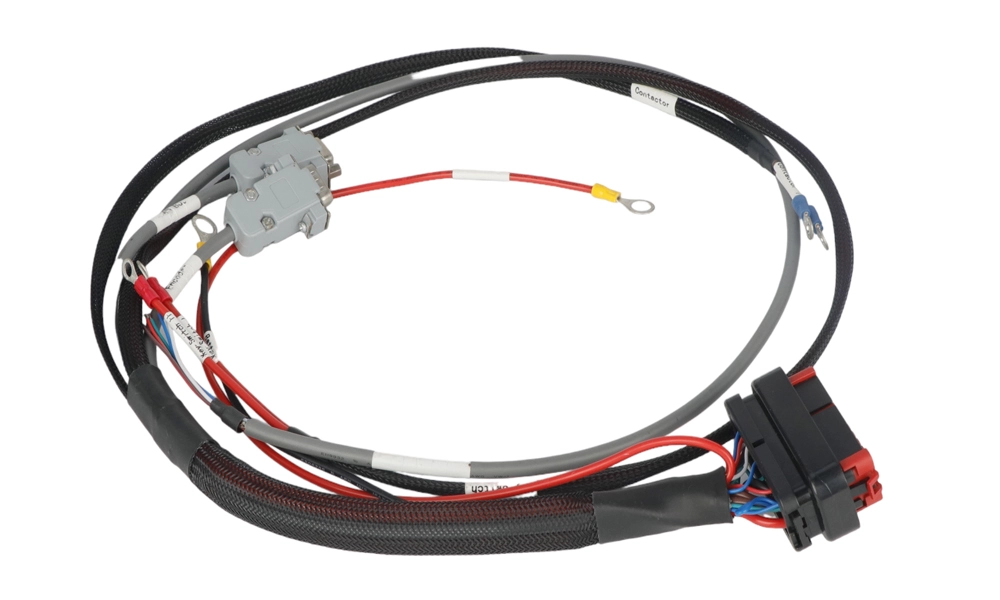In a world where connectivity is the lifeblood of modern industries, cable assemblies play a pivotal role. These intricate components often go unnoticed, but they are the unsung heroes behind the seamless functioning of numerous devices and systems. In this article, we will delve into the world of cable assemblies, shedding light on their definition, functions, and why they are the backbone of various industries.

What is a Cable Assembly?
A cable assembly, at its core, is an amalgamation of wires or cables that are bound together, usually within a protective outer sheath. It serves as a conduit for transmitting power, data, and signals from one point to another within a system.
Primary Function of Cable Assemblies.
The primary function of a cable assembly is to facilitate the organized and efficient transmission of electrical signals, power, or data. Whether it’s in a power distribution network, an intricate audio system, or a complex data center, cable assemblies ensure that information and energy flow seamlessly, without interference or loss. They act as the lifelines of various industries, serving as the vital arteries that keep systems alive and functioning at their best.
In the subsequent sections, we will explore in greater detail the multifaceted world of cable assemblies, the components they encompass, and the myriad applications where their versatility shines.
Function of Cable Assemblies
Cable assemblies are the unsung heroes of connectivity, seamlessly serving various critical functions in today’s technology-driven world. Their versatility and importance extend across a wide spectrum of applications, with a profound impact on power, data, and audio systems.
1. Power Systems:
• Cable assemblies are the lifelines of power distribution networks, ensuring electricity flows reliably from source to destination.
• They handle the transmission of power to everything from household appliances to industrial machinery, ensuring uninterrupted operation.
2. Data Transmission:
• In the digital age, data is the lifeblood of communication and information sharing. Cable assemblies are instrumental in data centers, networking equipment, and telecommunications systems.
• High-speed data cables, such as Ethernet and fiber optics, enable rapid data transfer with minimal signal loss.
3. Audio Systems:
• From concert venues to home theaters, cable assemblies play a critical role in audio systems, delivering crisp and clear sound.
• They ensure that the melodies and dialogues we hear are faithfully reproduced, enhancing our audiovisual experiences.
Essential Components in Modern Technology
Cable assemblies are the invisible threads that hold the fabric of modern technology together. They are essential components for several reasons:
• Reliability: Cable assemblies are designed for durability and reliability, with materials that withstand harsh environments and maintain performance over time.
• Customization: They can be tailored to specific requirements, allowing for the integration of various connectors, lengths, and shielding options.
• Reduced Interference: Properly designed cable assemblies minimize interference, ensuring that signals remain clear and uninterrupted.
• Efficiency: They optimize signal transfer, reducing energy loss and contributing to the efficiency of systems.
Components of Cable Assemblies
Cable assemblies are not just bundles of wires; they consist of several components carefully arranged to fulfill their intended purpose. These components may vary depending on the application, but some common elements include:
- Wires or Cables: These are the core conductors that carry electrical signals or power.
- Connectors: Connectors are the interface between the cable assembly and the devices it connects to.
- Insulation: Insulation materials protect wires from external factors and prevent electrical leakage.
- Sheathing: Outer sheathing provides physical protection and may offer additional shielding against electromagnetic interference (EMI).
- Other: In the realm of cable assemblies, specialized types like “spiral cable assembly” and “cable harness assembly” cater to specific needs, offering features such as flexibility, organization, and protection.
Understanding these components is essential for creating cable assemblies that meet the exact requirements of various industries and applications. As we explore further, we’ll delve deeper into the benefits, types, and critical applications of cable assemblies.
Benefits of Cable Assemblies
Cable assemblies are the unsung heroes of modern technology, quietly working behind the scenes to ensure seamless connectivity. Their advantages are numerous and vital across various industries:
- Efficiency: Cable assemblies optimize signal transmission, reducing energy loss and ensuring that power, data, or audio reaches its destination with minimal interference.
- Reliability: Designed for durability, cable assemblies maintain their performance even in demanding environments, providing consistent and uninterrupted connectivity.
- Customization: One of the standout features of cable assemblies is their adaptability. Custom cable assemblies can be tailored to meet specific requirements, allowing for the integration of various connectors, lengths, and shielding options. Custom cable assemblies can be tailored to meet specific requirements, allowing for the integration
- Reduced Interference: Properly designed cable assemblies minimize electromagnetic interference (EMI) and electromagnetic compatibility (EMC) issues, guaranteeing clear and uninterrupted signals.
- Organization: Cable assemblies contribute to neat and organized wiring, which simplifies maintenance and troubleshooting, saving time and resources.
Cable Support Assembly
Definition: A cable support assembly refers to a system or arrangement of components that help manage and secure cables within a structure or equipment. These assemblies ensure that cables are properly organized and protected.
Role in Cable Management:
- Cable support assemblies play a crucial role in maintaining the integrity of cable systems.
- They prevent cables from sagging, tangling, or being exposed to hazards, which can lead to damage or signal loss.
- These systems are often referred to as “cable support systems.”
Why Cable Support Systems Are Used
Cable support systems are employed for several compelling reasons:
- Organization: They maintain cables in an organized manner, reducing the risk of tangling or confusion during installation, maintenance, or repairs.
- Safety: Properly supported cables are less likely to pose tripping hazards or become damaged due to excessive bending or stress. This enhances workplace safety.
- Accessibility: Cable support systems ensure easy access to cables for maintenance or replacement, reducing downtime in critical systems.
- Protection: By shielding cables from environmental factors like moisture, dust, or chemicals, these systems extend the lifespan of cables and maintain their performance.
Importance of a Cabling System
A well-structured cabling system is the backbone of modern technology infrastructure, and its significance cannot be overstated:
- Crucial for Performance: A well-planned cabling system optimizes signal flow, minimizing signal loss and latency. This is particularly important in data centers, telecommunications, and industrial applications.
- Reliability: It enhances the reliability of connected systems, ensuring consistent performance without unexpected disruptions.
- Scalability: A structured cabling system is adaptable and can accommodate future expansions or changes without major overhauls.
- Ease of Maintenance: It simplifies troubleshooting and maintenance, reducing downtime and associated costs.
In conclusion, cable assemblies, supported by cable support systems and organized cabling infrastructures, are the unsung heroes that enable the seamless operation of modern technology. Their benefits extend far beyond their physical components, contributing to efficiency, reliability, and safety across various industries.
Types of Cable Assemblies
Cable assemblies come in a diverse range of types, each tailored to specific applications and requirements. Here, we introduce various types of cable assemblies and explore their applications and advantages:
- Coaxial Cable Assemblies (Coax Cable Assemblies):
- Applications: Coaxial cable assemblies are widely used in broadcasting, telecommunications, and networking. They are ideal for transmitting high-frequency signals, such as those for cable television, internet connections, and RF test equipment.
- Advantages: Coaxial cables offer excellent signal integrity, minimal interference, and high bandwidth capabilities.
- Flat Cable Assemblies (Flat Cable Assemblies):
- Applications: Flat cable assemblies, also known as ribbon cable assemblies, find extensive use in internal connections within electronic devices, such as computers, printers, and automotive systems.
- Advantages: They are known for their space-saving design, flexibility, and the ability to carry multiple signals within a single, flat ribbon structure.
- Power Cable Assemblies:
- Applications: Power cable assemblies are essential for delivering electrical power to various devices and systems, including industrial machinery, appliances, and infrastructure projects.
- Advantages: They are designed to handle high current loads and ensure safe and reliable power distribution.
- Custom Electric Cable Assemblies:
- Applications: Custom electric cable assemblies are highly versatile and can be tailored to suit a wide range of applications, from medical equipment to aerospace systems.
- Advantages: Their customizability allows them to meet specific requirements, including connectors, wire types, and shielding options.
Connectors in Cable Assemblies
Connectors are the pivotal components that bridge the gap between cable assemblies and the devices they serve. There are three primary types of connectors frequently used in cable assemblies:
- Plug Connectors: These male connectors are designed to fit into corresponding female receptacles, providing a secure and reliable connection. They are commonly used in a wide array of applications.
- Socket Connectors: Socket connectors, or female connectors, provide the receiving end for plug connectors. They ensure a secure and consistent connection, facilitating the flow of signals or power.
- Bulkhead Connectors: Bulkhead connectors are used when a cable needs to pass through a barrier, such as a wall or enclosure. They maintain a connection while preserving the integrity of the barrier.
Significance of Connectors in Cable Assemblies:
Connectors are the linchpin of cable assemblies, responsible for establishing and maintaining the continuity of signals, power, or data. Their significance lies in their ability to ensure reliable connections, easy assembly and disassembly for maintenance, and compatibility across various devices and systems. Connectors also play a crucial role in determining the performance, longevity, and adaptability of cable assemblies, making them an indispensable element in modern technology.
Conclusion
In this exploration of cable assemblies, we’ve uncovered the intricate web of wires and connectors that underpin modern technology. Cable assemblies are the silent architects of connectivity, serving indispensable roles across industries and applications.
